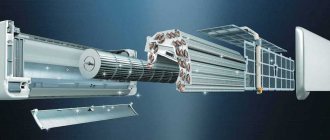Recently, creating a moonshine still with your own hands has become especially popular. If you decide to make it at home, you should familiarize yourself with the basic design and manufacturing steps.
To obtain a high-quality and tasty drink, you need to study the basic design and correctly assemble the device. To do this, you need to know the main elements, their purpose and assembly instructions. Today in this article we will talk about such an indispensable component as a coil.
What is a coil, principles of operation
If you decide to create a moonshine still at home, you should know the main points that you should pay attention to during assembly. One of the most important components is the coil. With its help, the contained mixture is divided into fractions of pure alcohol and water with an admixture of fusel oils. The separation process is based on differences in boiling points of different compounds.
In simple terms, a coil for a moonshine still is necessary so that you can get tasty and high-quality alcoholic drinks at the output.
Advantages of silicone hoses
The main doubts when choosing hoses for a moonshine still lie in the choice of a silicone element or a more economical analogue, namely a PVC product. The last option is quite risky, although more budget-friendly. Not every polyvinyl chloride will be able to withstand aggressive chemical compounds, high temperatures and other related factors that are present during moonshine brewing for a long time.
There is a possibility that the tubes will simply collapse during the process of preparing the drink, and under the influence of compounds and high temperatures, some of the released substances contained in the material will end up in the product.
If we compare silicone products with other types of hoses, in particular those made of PVC, we can highlight the following advantageous features:
- Wear resistance. Silicone is quite durable and even its repeated use in a moonshine system will not deteriorate its quality. That is why, if you plan to periodically produce alcohol, then it is better to pay attention to silicone tubes, which will withstand various influences due to their initial wear resistance;
- Resistance to high temperatures and changes. The material is able to withstand severe temperature changes, and the permissible intervals can range from -60°C, and the maximum value can reach +300°C;
- Resistance to chemical compounds, including quite aggressive ones. The production of alcohol is accompanied by the release of accompanying compounds. Naturally, they are not particularly chemically aggressive, but at high concentrations and constant contact they affect the walls of the system. Silicone tubes successfully cope with this effect and do not react with the compounds present;
- Anti-adhesive characteristics. Such parameters are important for food processes, since they imply the possibility of possible particles sticking to the walls and accumulating them on the surface, and also make it easy to clean the tubes themselves. If the tubes become clogged during the distillation process, the intensity of the removal or supply of water and product is disrupted, which will negatively affect the quality of the process. When blockages accumulate, it is sometimes necessary to interrupt the process and additionally blow out and clean the connecting elements;
- Bioinertness. In preparing a high-quality alcoholic drink, not only its strength and degree of purification are important, but also its taste characteristics, which can be ruined by ordinary pipes. High temperatures, components contained in the mash, as well as some other factors, can affect the structure of the hose material, which will lead to the release of a number of substances, but not when using silicone products. They are bioinert and do not react with other solutions. Therefore, silicone is successfully used not only in food processes, but also in medicine;
- Elasticity. This quality makes it possible to connect various elements of the system with each other without compromising cross-country ability. The elasticity of silicone tubes allows the products to be used repeatedly and their shape does not change, since even with deformation the material tends to return to its original configuration;
- No specific odor, including during operation. Even with prolonged use, there is no need to worry that a foreign odor will appear or the taste will change;
- Mechanical resistance. You can bend the hose, squeeze it, but it will not lose its functionality;
- Differences in size, section, color and other external characteristics. This allows the elements to be used for a variety of fittings and structures;
- The development of fungus is not supported, which is explained by the structure of the material;
- A convenient method of fastening, since the material tends to stretch a little, although there is also the option of using adapters;
- Long term. Compared to conventional rubber, the service life of silicone tubes is several times longer. The material is absolutely not inferior to PVC products, and even in some modifications exceeds the possible service life;
- Reasonable price. Compared with copper tubes, which have high practicality and corresponding cost;
This is interesting: Description and operating rules for the Karelin moonshine still
The characteristics of silicone, which are its advantageous features over other materials, are explained by a special manufacturing technology.
Special organosilicon compounds are taken as the basis, which, together with other compounds, are transformed into silicone surfaces during temperature changes, chemical reactions and certain manipulations. The technology itself is considered one of the modern ones, some stages are being modernized, and as a result such highly sought-after material is being produced. It is actively used in the food industry, medicine, everyday life and in other various processes where a reliable and safe connection is necessary.
Characteristic
Externally, the coil is a tube bent in a spiral, placed in a container of water, with a certain number of turns. It is thanks to the contact of vapors with the surface of the tube that the cooling process occurs (that’s why it is also called a cooler) and the precipitation of pure alcohol, while fusel oils are not retained and are removed from the chamber. The coil can be positioned diagonally, vertically or horizontally, but experienced winemakers recommend the vertical type of arrangement.
Optimal size
To select the optimal coil parameters, you need to understand the condensation mechanism itself. On the one hand, with a longer length, surface contact with vapor increases and the condensation rate increases, but this leads to an increase in resistance indicators. If the tube is too long, the distillation speed will decrease. It is best to take a handset with the following parameters:
- The length of the coil should vary between 1.5-2 meters.
- The internal cross-section (coil diameter) is within 8-12 mm.
Step-by-step manufacturing instructions
The connection process consists of several stages. You will need to do the following:
- Buy a tube that fits the parameters and bend it.
- Place the structure in a container of water. Attach tubes for water supply and drainage to the body.
- Install plugs in all holes and seal them tightly with glue.
Video: Step-by-step instructions for making a refrigerator for a moonshine still
Video: The simplest way to make a refrigerator
What can replace the coil?
If you want to make a simplified version, you can use the old method. To create a refrigerator, you will need a main pan with mash, a plate for cold water and a funnel for feeding alcohol into a special container.
Place the pan with mash on an open fire, and place a special container in the center to collect alcohol. Place a plate of cold water, ice or snow on top of the body. Drops of alcohol will condense on the bottom surface of the plate and drip into the funnel. You can also use metal-plastic elements for work.
Let's sum it up
As can be seen from the presented description and step-by-step instructions, you can make a cooler at home using available materials, and the cost will be within 350 rubles. This is a great way to save money and create a suitable coil configuration for your own unit. But do not forget about safety precautions when working and change elements in a timely manner.
Cooling the moonshine still
19.06.2018
Cooling a moonshine still with and without connection to a central water supply
In the summer, everyone wants to get out into nature: and moonshiners are no exception. There is no running water at the dacha. Couldn't a unit for preparing alcohol work there? Will be able! A pump for cooling the moonshine still will help start the water circulation. But before we talk about how to use it, a little theory. The role of the refrigerator in a moonshine still is to cool the alcohol vapor. As a result, the steam condenses and flows into the dish as a liquid. The better the cooler copes with this, the less time is spent on running. The power of the condenser is influenced by its design features and the temperature of the coolant. The latter completely depends on the moonshiner and on what cooling method he chooses.
There are two ways to reduce the steam temperature:
- In standing water;
- With a constant supply of cold water and removal of heated water.
Passive cooling
If the moonshine still is cooled without circulation, then the refrigerator consists of a coil placed in a container of water. A coil is a tube twisted into a spiral. This form increases the transit time of vapors and improves their heat exchange with cold liquid.
Heated water is manually withdrawn and cold water is added. This method has the following advantages:
- inexpensive price;
- independence from the presence of running water;
- no need for underwater hoses and adapters.
Flaws:
- the volume of distillate produced per hour is less compared to the result of a flow cooler;
- the need to monitor and promptly replace the heating fluid. Otherwise, a moonshine still left without cooling may break and even explode;
- storage requires more space due to the size of the container: the larger it is, the less often you will have to change the water.
Due to low performance, this cooling method is used less and less.
Flow cooling
With connection to central water supply
A moonshine cooler with running water involves the following design. Steam enters through one or more tubes that are located inside the pipe.
This pipe is the body of the refrigerator.
It has two holes located at different levels. Cold water flows into the bottom. Hot tubes give off heat and the steam inside them condenses. The heated water is directed to the upper hole and comes out, giving way to a new portion of cold water.
Water is drawn through a hose connected through an adapter to the mixer. The same hose is installed at the outlet of the refrigerator. It leads to the sink. Warm liquid flows through it into the pipeline. This method of steam distillation allows it to be cooled continuously and increases the productivity of the apparatus. But not everyone in a country house has running water. Somewhere the water supply is intermittent. And someone wants to reduce the volume of waste. All that remains is to use the old-fashioned method and lower the coil into a bucket? There's a better idea!
Without connection to central water supply
A pump for cooling the moonshine still helps create the effect of running water. To do this, the pump is immersed in a bucket of liquid. A silicone or PVC tube leading to a distiller is connected to the device. Along it, the pump begins to pump water from the bucket into the cooler.
Inside the refrigerator, according to the laws of physics, warm masses begin to rise upward. They flow out through the outlet tube. Then there are two options for directions:
- Warm liquid rushes into the same bucket. Water of different temperatures is mixed. As soon as it becomes warm, it is replaced.
The heated water is directed to the radiator. The air flow cools it to room temperature and goes back into the container. This option creates a completely autonomous cooling cycle, eliminating the need to monitor water heating.
You can make the moonshine cooler even more independent from home systems: you just need to buy a pump powered by a battery or solar panel. Then you can make a drink even in a clearing! So, in order to get alcohol on the go, it is not necessary to sacrifice time for this. Connect the pump to the unit circuit. And then determine your share of participation. If you don’t want to bother with changing water, choose air cooling. If you decide to combine barbecue with moonshine brewing, choose a place near the water and purchase the appropriate pump kit for cooling the moonshine still.











